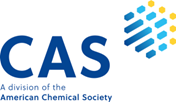Anatomical Variations of the Distal Radius and Their Influence on Functional Outcomes After Open Reduction and Internal Fixation
Distal Radius Variations and ORIF Outcomes
DOI:
https://doi.org/10.69750/dmls.02.06.0132Keywords:
Distal radius, Anatomical variation, ORIF, Volar plate, Functional outcome, Lunate fossaAbstract
Background: Distal radius fractures are common injuries with highly variable outcomes despite advances in surgical fixation. Anatomical parameters such as radial height, inclination, volar tilt, and lunate fossa morphology are key determinants of wrist biomechanics. Variations in these parameters may significantly influence recovery following open reduction and internal fixation (ORIF).
Objective: To evaluate anatomical variations of the distal radius and their impact on functional outcomes in patients undergoing ORIF with volar locking plates.
Methods: This prospective observational study was conducted at tertiary care hospitals in Pakistan from June 2024 to March 2025. Seventy patients aged 18–70 years with acute distal radius fractures (AO types A–C) underwent ORIF using volar locking plates. Preoperative and postoperative radiographs were analyzed for radial height, inclination, volar tilt, and lunate fossa morphology. Functional outcomes were assessed using the Disabilities of the Arm, Shoulder, and Hand (DASH) score, Visual Analog Scale (VAS) for pain, wrist range of motion, and grip strength at 6 weeks, 3 months, and 6 months.
Results: The mean age of patients was 44.6 years, with 58.6% females. At final follow-up, mean radial height was 11.2 mm, inclination 21.1°, and volar tilt 9.3°. Restoration of these parameters correlated significantly with improved DASH scores (p < 0.05) and grip strength. Patients with shallow or irregular lunate fossae demonstrated slower functional recovery and early radiographic arthritic changes. Complications occurred in 20% of patients, most commonly stiffness.
Conclusion: Anatomical variations of the distal radius significantly affect functional outcomes following ORIF. Accurate restoration of native radial height, inclination, and volar tilt, alongside recognition of lunate fossa morphology, is essential for optimizing postoperative recovery.
Downloads
References
Lee DY, Park YJ, Park JS. A meta-analysis of volar locking plate fixation of distal radius fractures: conventional versus minimally invasive plate osteosynthesis. Clin Orthop Surg. 2019;11(2):208-19. doi:10.4055/cios.2019.11.2.208
Watanabe K, et al. Carpal alignment in distal radius fractures following volar locking plate fixation: quantitative analysis. J Orthop Surg (Hong Kong). 2019;27(1):2309499019835040. doi:10.1177/2309499019835040
Thorninger R, Wæver D, Tjørnild M, Lind M, Rölfing JD. VOLCON: randomized controlled trial of volar plating vs casting in unstable distal radius fractures in patients >65 years. J Orthop Traumatol. 2022;23(1):54. doi:10.1186/s10195-022-00673-4
Qaisar A, Ullah N, Salman M, Ullah Z, Haider S. Volar plating vs conservative treatment in distal radius fractures—RCT. J Popul Ther Clin Pharmacol. 2023;30(19):1917-22. doi:10.53555/jptcp.v30i19.4029
Hassan HU. Functional outcomes of distal radius fractures treated with 2.7 mm volar locking plate using Mayo’s wrist score. Pak Postgrad Med J. 2022.
Nadeem F, Amin MS, Iqbal MN, Rasheed MA, Junaid M. Functional outcomes after volar plating vs Kirschner wire fixation in distal radius fractures. Pak Armed Forces Med J. 2024;74(Suppl 2):S304-9. doi:10.51253/pafmj.v74iSUPPL-2.11878
Aamir M. Functional outcome of volar locking plate fixation in adults for displaced intra-articular distal radius fractures. Insights J Health Res. 2025.
Imatani J, et al. Volar distal radius anatomy applied to volar locking plate fixation safety. J Hand Surg Am. 2017;42(11):977-85. doi:10.1016/j.jhsa.2017.08.015
Daniele L, et al. Anatomic variation in volar tilt of scaphoid and lunate facets of the distal radius. J Hand Surg Am. 2016;41(11):e399-404. doi:10.1016/j.jhsa.2016.07.108
Kwon BC, et al. Morphometric variations in volar aspect of distal radius in Korean cadavers. Clin Orthop Surg. 2018;10(4):467-75. doi:10.4055/cios.2018.10.4.467
Ahmed M, et al. Functional outcome of intra-articular distal radius fractures managed by volar locking plate. Cureus. 2020;12(10):e11271. doi:10.7759/cureus.11271
Porrino JA Jr. Fracture of the distal radius: epidemiology, classification, and imaging. AJR Am J Roentgenol. 2014;202(6):W519-31. doi:10.2214/AJR.13.12140
Orthopaedic Trauma Association. OTA Core Curriculum V5: Distal radius fractures epidemiology and description. Rosemont (IL): OTA; 2021.
Wikipedia. Distal radius fracture: anatomy and radiographic parameters. Available from: https://en.wikipedia.org/wiki/Distal_radius_fracture
Wikipedia. Distal radius fracture: causes and associated injuries. Available from: https://en.wikipedia.org/wiki/Distal_radius_fracture
Saeed M. Functional outcomes and complications in volar Barton distal radius fractures. JHRLMC. 2024;
Aslam S, et al. Faisal technique vs volar plating in volar Barton fractures. Pak J Health Sci. 2025; [Forthcoming].
Yan H, et al. Load distribution in dorsally angulated distal radius with volar locking fixation. J Hand Surg Am. 2023;48(10):897-905. doi:10.1016/j.jhsa.20 22.08.009
Arshad MA, et al. Functional outcome following conservative management of distal radius fractures. Trop Pak Med J. 2024;31(6):961-6.
Lawson A, et al. Surgical plating vs closed reduction in elderly distal radius fractures. JAMA Surg. 2021;156(3):229-37. doi:10.1001/jamasurg.2020.56 72
Mauck BM, Swigler CW. Evidence-based review of distal radius fractures. Orthop Clin North Am. 2018;49(2):211-22. doi:10.1016/j.ocl.2017.12.001
Gutiérrez Espinoza H, et al. Surgical vs conservative treatment of distal radius fractures in elderly: systematic review. Orthop Traumatol Surg Res. 2022;108(5):103323. doi:10.1016/j.otsr.2022.103323
Brogren E, et al. Incidence and characteristics of distal radius fractures in Sweden. BMC Musculoskelet Disord. 2007;8:48. doi:10.1186/1471-2474-8-48
Earp BE, Foster B, Blazar PE. Single volar locking plate for AO C3 type distal radius fractures. Hand (N Y). 2015;10(4):649-53. doi:10.1007/s11552-015-9757-8
Wichlas F, Haas NP, Disch A, Machó D, Tsitsilonis S. Palmar vs dorsal locking plate osteosynthesis: complications and reduction potential. J Orthop Traumatol. 2014;15(4):259-64. doi:10.1007/s10195-014-0306-y
Kateros K, et al. External fixation vs π plate for distal radius fractures. J Trauma Acute Care Surg. 2010;68(1):166-72. doi:10.1097/TA.0b013e3181 b0d4be
Kapoor H, Agarwal A, Dhaon BK. Displaced intra-articular distal radius fractures: closed reduction vs external fixation vs ORIF. Injury. 2000;31(2):75-9. doi:10.1016/S0020-1383(99)00207-7
Tanveer M, et al. Effectiveness of a school-based physical activity intervention on overweight and obesity among children and adolescents in Pakistan. PLoS One. 2025;20(2):e0317534. doi:10.13 71/journal.pone.0317534
Tanveer M, et al. Associations of 24-h movement behaviour with overweight and obesity among school-aged children and adolescents in Pakistan: an empirical cross-sectional study. Pediatr Obes. 2025;20(2):e13208. doi:10.1111/ijpo.13208
Tanveer M, et al. Association of sleep duration with overweight and obesity among school-aged children and adolescents in Pakistan—an empirical cross-sectional study. J Educ Health Promot. 2025;14(1):43. doi:10.4103/jehp.jehp_1453_24
Tanveer M, et al. Associations of parental support and involvement in sports with overweight and obesity among children and adolescents in Pakistan: an empirical cross-sectional study. Phys Act Rev. 2025;13(1):35-47. doi:10.16926/par.2025.13.04
Tanveer M, et al. Association of physical activity and physical education with overweight and obesity among school-aged children and adolescents in Pakistan: an empirical cross-sectional study. Adv Public Health. 2024;2024:5095049. doi:10.115 5/2024/5095049
Tanveer M, et al. Associations of school-level factors and school sport facility parameters with overweight and obesity among children and adolescents in Pakistan: an empirical cross-sectional study. Sports (Basel). 2024;12(9):235. doi:10.3390/sports12 090235
Tanveer M, et al. Association of nutrition behavior and food intake with overweight and obesity among school-aged children and adolescents in Pakistan: a cross-sectional study. AIMS Public Health. 2024;11(3):803-18. doi:10.3934/publichealth.2024 040
Tanveer M, et al. Community-level physical activity opportunities, safe and supportive environment factors, and their association with overweight and obesity among school-aged children and adolescents in Pakistan: a cross-sectional study. Kurdish Stud. 2024;12(2):6425-32. doi:10.53555/ks.v12i2.2845
Tanveer M, et al. Intrapersonal-level unhealthy behaviors (smoking, drinking alcohol, and tobacco use) and their association with body mass index among school-aged children and adolescents in Pakistan. J Popul Ther Clin Pharmacol. 2024;31(3):50-62. doi:10.53555/jptcp.v31i3.4706
Tanveer M, et al. Prevalence of body mass index and its association with interpersonal family-level factors among school-aged children and adolescents in Pakistan. J Popul Ther Clin Pharmacol. 2024;31(2):2365-76. doi:10.53555/jptcp.v31i2.4576
Tanveer M, et al. The current prevalence of underweight, overweight, and obesity associated with demographic factors among Pakistan school-aged children and adolescents—an empirical cross-sectional study. Int J Environ Res Public Health. 2022;19(18):11619. doi:10.3390/ijerph191811619
Tanveer M, et al. Community-level factors associated with body mass index among Pakistani school-aged adolescents. Pak J Med Health Sci. 2022;16(9):463-6. doi:10.53350/pjmhs22169463
Tanveer M, et al. Parental health attitudes and knowledge factors associated with body mass index among Pakistani school-aged adolescents. Pak J Med Health Sci. 2022;16(9):479-82. doi:10.53350/pjmhs22169479
Tanveer M, et al. Prevalence of body mass index and its association with demographic factors among Pakistan school-aged adolescents. Pak J Med Health Sci. 2022;16(6):212-5. doi:10.53350/pjmhs22166212
Tasawar A, Tanveer M. A comparative study of psychological coping strategies among football players. J Popul Ther Clin Pharmacol. 2024;31(3):962-75. doi:10.53555/jptcp.v31i3.5045
Roy N, Tanveer M, Liu YH. Stress and coping strategies for international students in China during COVID-19 pandemic. Int Res J Educ Innov. 2022;3(1):1-12. doi:10.53575/irjei.v3.01.1(22)1-12
Tanveer M, et al. Association of screen-based sedentary behavior with overweight and obesity among school-aged children and adolescents in Pakistan: an empirical cross-sectional study. Sport Sci Health. 2025; [Epub ahead of print]:1-12.
Al-Mhanna SB, Tanveer M. Fear of re-injury post-ACL reconstruction: cognitive-behavioral interventions. Health Nexus. 2025;3(4):1-11. doi:10.61838/kman.hn.3.4.9






















